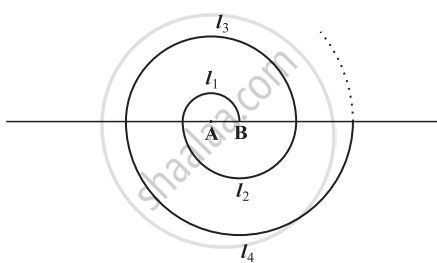Advertisements
Advertisements
प्रश्न
Find the sum of first 15 multiples of 8.
उत्तर १
The multiples of 8 are
8, 16, 24, 32…
These are in an A.P., having the first term as 8 and common difference as 8.
Therefore, a = 8
d = 8
S15 =?
`S_n = n/2[2a+(n-1)d]`
= `15/2[2(8)+(15-1)8]`
= `15/2[16+14(8)]`
= `15/2(16+112)`
= `(15(128))/2`
= 15 × 64
= 960
Therefore, the sum of the first 15 multiples of 8 is 960.
उत्तर २
Multiples of 8 are: 8, 16, 24, 32, ........... , Which form an A.P. with first term, a = 8 and common difference, d = 8
∵ Sum of nth term of A.P.
Sn = `n/2[2a + (n - 1)d]`
∴ S15 = `15/2 [2 xx 8 + (15 - 1) xx 8]`
= `15/2 [16 + 112]`
= `15/2 xx 128`
= 15 × 64
= 960
APPEARS IN
संबंधित प्रश्न
The ratio of the sum use of n terms of two A.P.’s is (7n + 1) : (4n + 27). Find the ratio of their mth terms
Find the sum given below:
–5 + (–8) + (–11) + ... + (–230)
Find the sum of first 51 terms of an AP whose second and third terms are 14 and 18 respectively.
In a school, students thought of planting trees in and around the school to reduce air pollution. It was decided that the number of trees, that each section of each class will plant will be the same as the class, in which they are studying, e.g., a section of class I will plant 1 tree, a section of class II will plant 2 trees, and so on till class XII. There are three sections of each class. How many trees will be planted by the students?
A spiral is made up of successive semicircles, with centres alternately at A and B, starting with centre at A of radii 0.5, 1.0 cm, 1.5 cm, 2.0 cm, .... as shown in figure. What is the total length of such a spiral made up of thirteen consecutive semicircles? (Take `pi = 22/7`)

[Hint: Length of successive semicircles is l1, l2, l3, l4, ... with centres at A, B, A, B, ... respectively.]
Find the sum of first 12 natural numbers each of which is a multiple of 7.
Find the three numbers in AP whose sum is 15 and product is 80.
The sum of three consecutive terms of an AP is 21 and the sum of the squares of these terms is 165. Find these terms
The angles of quadrilateral are in whose AP common difference is 10° . Find the angles.
Choose the correct alternative answer for the following question .
In an A.P. 1st term is 1 and the last term is 20. The sum of all terms is = 399 then n = ....
Fill up the boxes and find out the number of terms in the A.P.
1,3,5,....,149 .
Here a = 1 , d =b`[ ], t_n = 149`
tn = a + (n-1) d
∴ 149 =`[ ] ∴149 = 2n - [ ]`
∴ n =`[ ]`
The sum of first n terms of an A.P is 5n2 + 3n. If its mth terms is 168, find the value of m. Also, find the 20th term of this A.P.
Write the nth term of an A.P. the sum of whose n terms is Sn.
If the sum of n terms of an A.P. is 2n2 + 5n, then its nth term is
Let Sn denote the sum of n terms of an A.P. whose first term is a. If the common difference d is given by d = Sn − kSn−1 + Sn−2, then k =
Q.4
The sum of first six terms of an arithmetic progression is 42. The ratio of the 10th term to the 30th term is `(1)/(3)`. Calculate the first and the thirteenth term.
Find the sum of odd natural numbers from 1 to 101
The sum of all two digit odd numbers is ______.
Solve the equation
– 4 + (–1) + 2 + ... + x = 437
